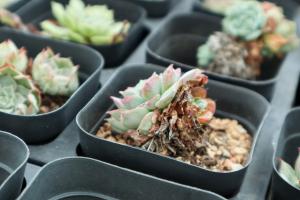Introduction
Whether you are preparing to close your pool for the winter or just looking to practice eco-friendly water conservation, pumping out pool water for plants can be an effective solution. Excess pool water can be repurposed to nourish lawns, gardens or even crops. In this article, we will guide you on how to safely and efficiently pump out pool water for plants.
Choose the Right Pump
A high-quality water pump is essential in ensuring the safe and efficient transfer of pool water for gardening. Submersible pumps or pool pumps can be used for this purpose. Before purchasing a pump, consider the size of your pool and the amount of water you need to transfer. Read reviews and compare prices to ensure you get the right tool for the job.
Prepare Your Garden Beds
Preparing your garden beds is crucial for ensuring the pool water has a positive impact on your plants. Before pumping out the water, remove any debris such as leaves, grass or weeds. Loosen soil with a garden fork to create space for the water to seep through. If you have established plants, dig small trenches around them to allow the water to penetrate more deeply into the soil. This will help prevent water pooling and minimize the risk of root rot.
Drain Your Pool
Once you have chosen the right pump and prepared your garden beds, it's time to start pumping. Begin by draining your pool to a safe level. Avoid draining your pool completely as this can damage the lining and risk collapse. Aim to pump out no more than half of the pool's water at any given time. This will not only keep your pool safe but also ensure a steady water supply for your plants.
Set Up Your Pump
Set up your pump in a safe and convenient location. Be sure to use a power outlet that is equipped with a ground fault circuit interrupter (GFCI) to prevent electrocution. Attach the pump's hose to the discharge pipe and place the other end into your garden beds. Make sure the hose is secure to prevent leaks.
Pump Out Pool Water for Plants
Once your pump is securely set up and connected to your garden beds, turn it on and let it run. Be patient as pumping out the pool water may take some time, especially if you have a large pool. Be careful not to over-water your plants. Too much water can damage roots and stems, causing them to rot. Check on your plants regularly to ensure they are receiving the appropriate amount of water.
Conclusion
Pumping out pool water for plants is an excellent way to repurpose excess water and promote eco-friendly practices. With the right pump, preparation and care, you can safely and efficiently transfer your pool water to your garden beds. Be mindful of your watering habits and continue to invest in sustainable gardening practices to help protect and preserve our environment.

 how many times do yo...
how many times do yo... how many planted tre...
how many planted tre... how many pine trees ...
how many pine trees ... how many pecan trees...
how many pecan trees... how many plants comp...
how many plants comp... how many plants can ...
how many plants can ... how many plants and ...
how many plants and ... how many pepper plan...
how many pepper plan...





























